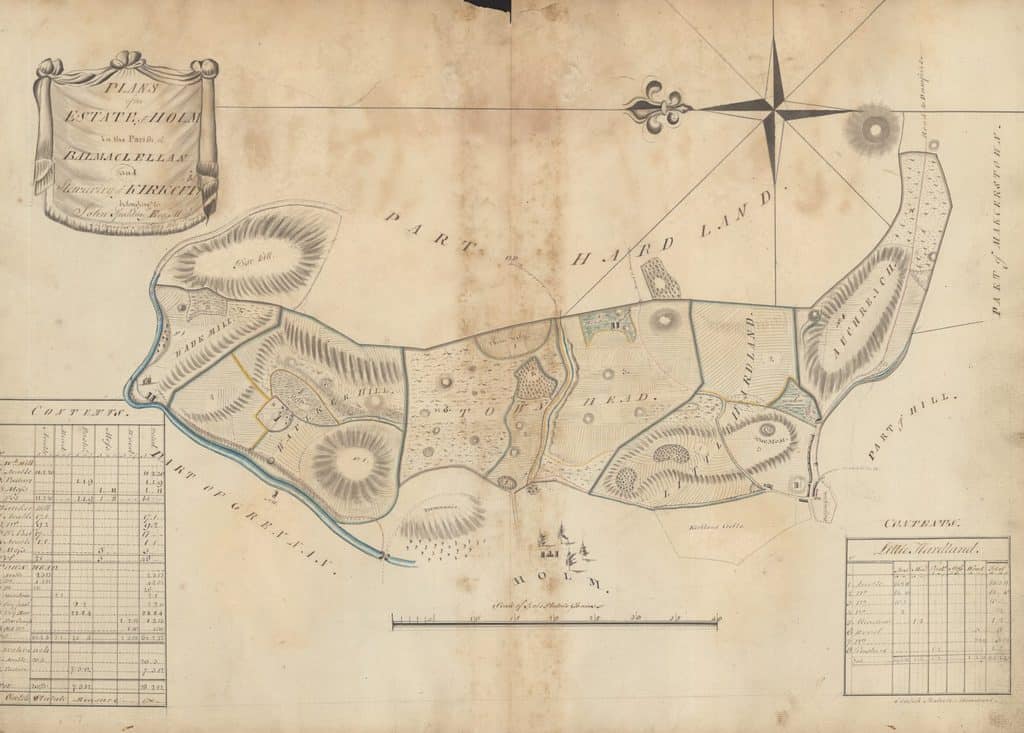Geography of Literature: Using Historic Maps to explore the influence of our landscape on local authors. Online Event: Wednesday, 25th November, 7.30pm
The Dumfries Archival Mapping Project (DAMP), in partnership with the Galloway Glens Scheme, is delighted to announce plans for what, even in these times of online events, promises to be an experience unlike anything else!
At 7.30pm on 25th of November, you could join the map-hunting experts from DAMP and a range of distinguished speakers, seeking to explore what pre-Ordnance Survey era maps can tell us about the Galloway landscape, and how this influenced or inspired literature from the time.
With a focus on authors such as S.R.Crockett, Sayers, Cunningham and Burns, the event will identify inspiration gleaned from the local landscape, exploring how this is represented on historic maps and, using this evocative subject, discuss broader questions such as landscape change which affect us right through to the present day.
The event promises to be entertaining as well as enlightening, consisting of live presentations and pre-recorded video, including plenty of opportunities to ask questions of the expert panel. Book your free place here: https://www.eventbrite.co.uk/e/geography-of-literature-tickets-127431883193
The event was conceived by DAMP’s map hunter-in-chief, Archie McConnel. Archie said:
R L Stevenson once remarked that “All adventures start with a good map!” All the different ways in which people have used maps are fascinating. In this presentation we see maps being used to show a journey from A to B, to develop a sense of place or perhaps to catch a criminal…or even to commit murder!!!!! I don’t know about you but I am looking forward to the 25th and not least because I know that there will be some marvellous landscape photography!”
The event is being hosted and supported through the National Lottery Heritage Fund supported Galloway Glens Scheme. Nick Chisholm, Galloway Glens Project Officer, added:
Wow! What a fascinating set of characters we have who have written in and been inspired by our landscape. This event will shine a light on times past and through up some facts many of us will be unaware of. I am privileged enough to have seen the sort films our experts are putting together and they are very very good!
One of the speakers on the night will be Chris Rollie – exploring how Robert Burns will have seen the landscape and how this influenced his writing. Chris said:
“In all the various coverage and commentaries on Burns, his visit to the Glenkens at the end of July 1793 with friend John Syme have had relatively little exposure. They looked across Loch Ken to Airds Wood and marvelled at the rugged hills beyond before continuing on to Kenmure Castle, their base for three days exploration of the Glenkens with host John Gordon and guide Dr Robert Trotter of Dalry. John Ainslie’s map of 1797 allows us to see these places in the context of the roads, habitations and largely treeless landscape of Burns’s day. Of course, we can also walk to Kenmure Castle and Lochenbreck Well, on the travellers’ stormy route to Gatehouse, which Syme said played such an inspirational part in Burns’s composition of Scots Wha Hae, which the poet sent off to various friends soon after their visit to Galloway. Alan Cameron’s evocative short film includes a fascinating bird’s eye view of the setting, and an explicable basic error by myself in the commentary, see if you can spot it!”
The Galloway Glens Scheme is supported by the Galloway & Southern Ayrshire UNESCO Biosphere. Ed Forrest, Biosphere Co-Ordinator, added:
“Land use change in our UNESCO Biosphere has been happening since the dawn of time. As illustrated by some of our literary greats it has really accelerated in the last two hundred years and both then as now can be a hugely emotive subject.”






